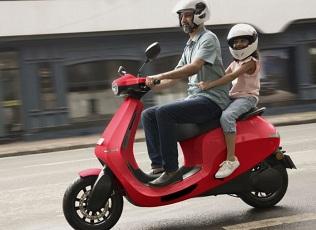Much concerned over the rising cases of fire incidents in electric two wheelers in different parts of the country, the road transport ministry has introduced a number of additional safety provisions in the battery safety standards, which are going to come into effect from October 1. The new development is preceded by the serious brain storming of an expert committee constituted under the chairmanship of Tata Narsingh Rao, Director, ARC’, Hyderabad, by the Ministry of Road Transport and Highway.
The committee also comprises M.K. Jain- scientist – G, CFEES, DRDO, Dr. Arti Bhatt- scientist-F, additional director, CFEES, DRDO, Dr. Subba Reddy- principal research scientist, IISc, Bengaluru, Prof. L Umanand-chair, DESE, IISc, Bangaluru, Dr. M. Srinivas- scientist, NSTL, Visakhapatnam, Prof. Devendra Jalihal-head, C-BEEV, 11T Madras, Chennai as members. This committee has recommended additional safety requirements in the existing battery safety standards notified under CMV Rules.
Based on the recommendations of the expert committee report, the ministry has issued amendment 2 to AIS 156- specific requirements for motor vehicles of L category- motor vehicles with less than four wheels and is a quadricycle with electric powertrain and amendment 2 to AIS 038 Rev. 2 – specific requirements for electric power train of motor vehicles of M category – motor vehicle with at least four wheels used for carrying passengers and N category- motor vehicle with at least four wheels used for carrying goods which may also carry persons in addition to the goods.
These amendments include additional safety requirements related to battery cells, BMS, on-board charger, design of battery pack, thermal propagation due to internal cell short circuit leading to fire etc. The notification to mandate amended AIS 156 and AIS 038 Rev.2 standards for the respective categories of electric vehicles with effect from 1 st October 2022 is in progress.
Earlier, the Centre took a number of steps to promote use of electric vehicles in India. Presently, India has a total of 13, 34, 385 electric vehicles and 27,81,69,631 non-electric vehicle in use. The e-vahan portal of the Ministry of Road Transport and Highways gives information regarding the numbers.
The steps taken by the government to promote electric vehicles include the Faster Adoption and Manufacturing of (Hybrid &) Electric Vehicles in India (FAME India) scheme in 2015 with an aim to reduce dependency on fossil fuel and to address issues of vehicular emissions. At present, phase-II of FAME India scheme is being implemented for a period of 5 years with a total budgetary support of Rs. 10,000 crores.
Earlier, the government approved a Production Linked Incentive (PLI) scheme for manufacturing of Advanced Chemistry Cell (ACC) in the country in order to bring down prices of battery in the country in 2021. Drop in battery price will result in cost reduction of electric vehicles. Electric vehicles are covered under Production Linked Incentive (PLI) scheme for automobile and auto components, which was approved on 15th September 2021 with a budgetary outlay of Rs. 25,938 crore for a period of five years.
The number of electric vehicles in the country is over 10,76,420 and more than 1,742 Public Charging Stations (PCS), as per the Bureau of Energy Efficiency (BEE), are operational in the country. The Ministry of Power has issued ‘Charging Infrastructure for Electric Vehicles – the revised consolidated Guidelines and Standards’ on 14.01.2022 to accelerate the E-Mobility transition in the country.








